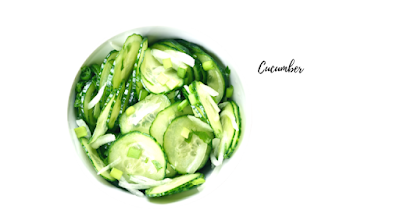In recent years, plant-powered ingredients from super foods and whole foods have gained wide attention and popularity because of their benefits. These ingredients nourish our bodies with nutrients, antioxidants and studies have shown that they have the amazing ability to balance our body pH, thanks to their alkaline forming properties.
In this article, we list down t
he best 16 superfoods and wholefoods you should be eating every day.
1. Chia Seed
Despite their tiny size, chia seeds are full of important nutrients. They are an excellent source of
omega-3 and omega-6 fatty acids, rich in antioxidants, and they provide dietary fibre, iron, and calcium.
2. Spirulina
Spirulina is a microalga popularly known as a superfood due to its great diversity and concentration of nutrients. It is made up of almost 60% complete and highly digestible protein; it contains all essential amino acids. It is the best whole food source of
gamma linolenic acid (GLA). Furthermore, it is rich in B vitamins, minerals, trace elements, chlorophyll, and enzymes.
3. Chlorella
Chlorella is a green microalga with biological and pharmacological properties beneficial to us. Chlorella has a long history of use as a food source because it
contains both macro and micronutrients such as protein, omega-3 polyunsaturated fatty acids, polysaccharides, vitamins, and minerals.
4. Blue-Green Algae
Blue-green algae (BGA), is a cyanobacteria found in aquatic ecosystems. BGA are nutritious natural products rich in essential amino acids, γ-linolenic acid (GLA), fibres, B vitamins, calcium, phosphorous, iron, pigments such as β-carotene, xanthophylls, and chlorophyll, and other bioactive compounds.
5. Carrot
Carrot is packed with antioxidants such as
carotenoids, flavonoids, polyacetylenes, vitamins and minerals, all of which possess numerous nutritional and health benefits. Carotenoid in carrots are potent antioxidants which can neutralize the effects of free radicals.
6. Cucumber
Cucumber is a rich source of valuable nutrients and bio-active compounds and is used not only as food but also in cosmetology. It is rich in polyphenolics and cucurbitacins, that are known to possess multiple biological activities such as antioxidant, anti-inflammatory and other health benefits
7. Pumpkin
Pumpkin offers a wide range of health benefits including vitamins, mineral and other healthy nutrients. Pumpkin is one of the best-known sources of
beta-carotene, a powerful antioxidant.
8. Spinach
Spinach is a
vegetable high in nutritional value. It is a good source of vitamins B6, riboflavin, folate, niacin, soluble dietary fibre, omega 3-fatty acid and minerals. Spinach is also rich in vitamin A, C and K, magnesium, iron, and manganese.
9. Asparagus
Asparagus is rich in protein, fat, vitamins and minerals, and the contents are
five times higher than that of the other vegetables. In the Traditional Chinese Medicine book called Compendium of Materia Medica, asparagus contains a variety of bioactive phytochemicals, including bioactive polysaccharides, steroidal saponins, flavonoids, dietary fibre and bioactive oligosaccharides.
10. Bell Pepper
Red bell peppers contain up to twice as much vitamin C as citrus fruits do. Bell peppers also contain large quantities of phenolic compounds or flavonoids called quercetin, luteolin, and capsaicinoids. The consumption of these bioactive compounds provide beneficial effects to human health due to their antioxidant properties.
11. Acerola
Acerola is one of the richest
natural source of ascorbic acid (about 50–100 times more than orange or lemon) and contains a host of other phytonutrients like carotenoids phenolics, anthocyanins, and flavonoids. Having a reservoir of phytonutrients, acerola exhibits high antioxidant capacity.
12. Flax Seed
Flax seed has become known as a functional food due to its nutritional composition. It contains good amounts of
alpha linolenic acid (ALA), omega-3 fatty acid, protein, dietary fibre and lignan. Flax seed’s dietary fibre exhibits positive effect to reduce constipation and to keep better bowel movement.
13. Brown Rice
Brown rice is a good source of nutrients like minerals, vitamin B and E, and fibre and nutraceuticals like oryzanol, phytosterols, and polyphenols that benefits health.
14. Bladderwrack
Bladderwrack is the common name for the seaweed Fucus versiculosus L., thallus. It is
rich in iodine which supports thyroid health and other minerals such as calcium, magnesium, potassium, sodium, and trace minerals.
15. Peppermint and Spearmint
Peppermint (Mentha piperita L.) is a prominent medicinal herb with strong antioxidant and health properties. It helps support the immune system and enhance appetite. Spearmint is a refreshing-smelling species of mint that contains vitamins, antioxidants, and vital nutrients.
16. Kale
Kale (Brassica oleracea Acephala group) is a leafy green vegetable belonging to the Brassicaceae family. In the last decade, kale has gained the attention of the scientific community due to its
high content of bioactive compounds such as vitamin C, pro-vitamin A, glucosinolates, phenolic antioxidants, dietary fibre, micronutrients (iron, zinc and manganese) and macronutrients.
Experience the nutritional power of superfoods and wholefoods to give your body the support and boost it needs to help you stay motivated, positive and strong. For consumers convenience, consider taking
4Life Bountiful Harvest which packed with these 16 superfoods and wholefoods.
























.png)




